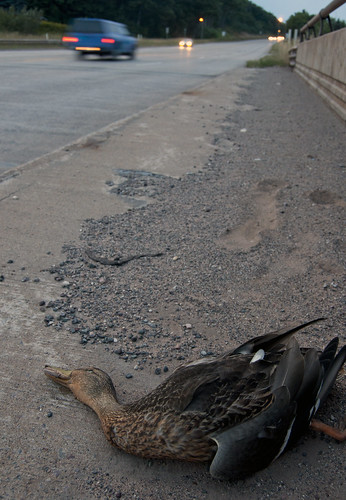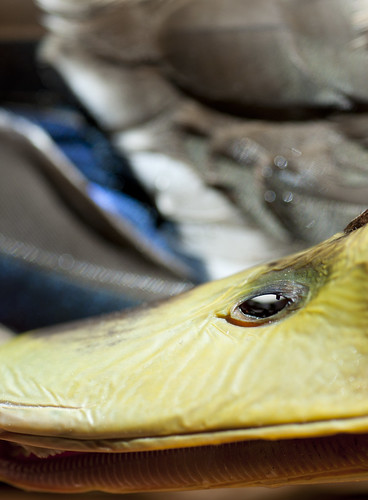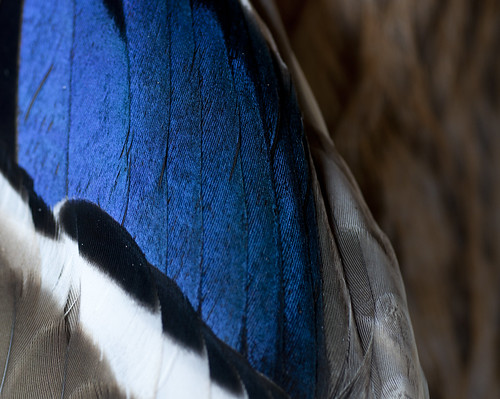The mallard had just been hit; the neck was broken, and the eyes were moist. Thrown several feet from the road, the body rested on the short bridge that crosses the mouth of the Carp River -- an area, I've found, that is a popular spot for ducks.
Mallards are common birds: they're found almost everywhere, from neighborhood parks to the shores of Lake Superior. Often, small groups swim by on the Chocolay River, quacking loudly as they pass. And yet, in all their familiarity, I had never seen a mallard so closely until I saw this particular duck. Until very recently I thought it was a female, but the yellow bill says otherwise -- I believe it was a juvenile drake.
His plumage was beautiful, and I couldn't help but marvel at how soft and dense the feathers were on his head and neck -- they looked and felt like fur.
It was also neat to see the signature band of blue on the mallard's wings. Often, I'll see solitary blue feathers washed up on the beach, but to see them all together was quite the opportunity. Depending on the angle that the light was striking them, the feathers would appear blue, teal, green, or colorless.
Since I travel on US 41 into town for work, I see lots of different animals dead on the road. Most common are raccoons and squirrels, but this duck was certainly an unusual victim. Other recent casualties along this stretch of highway have been a mink, a whitetail deer fawn, and a coyote. It's a beautiful drive, between mountains and Lake Superior, but it comes at a price to local wildlife.








